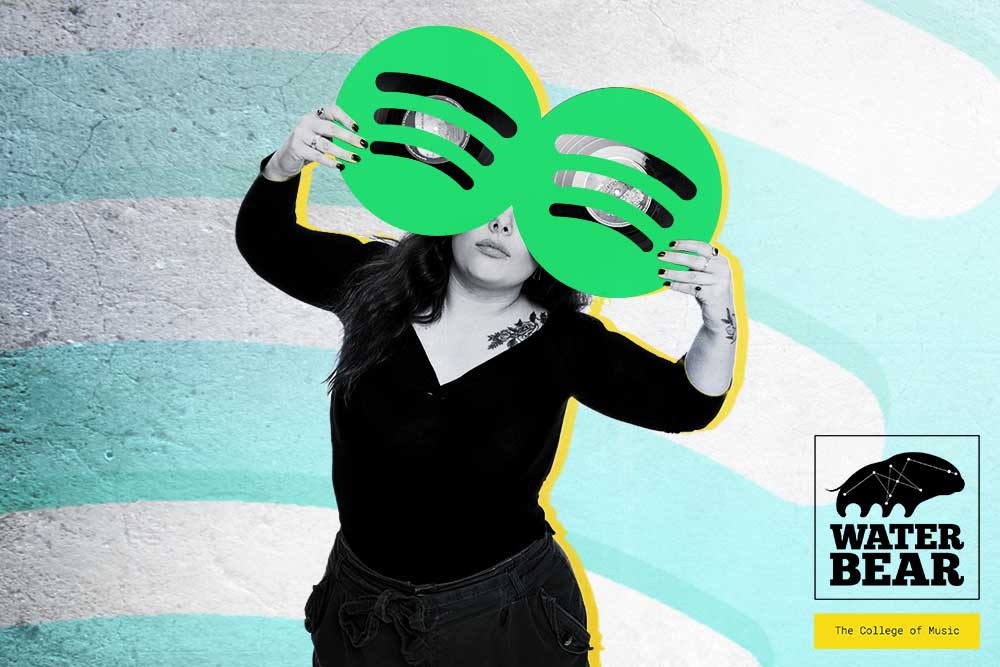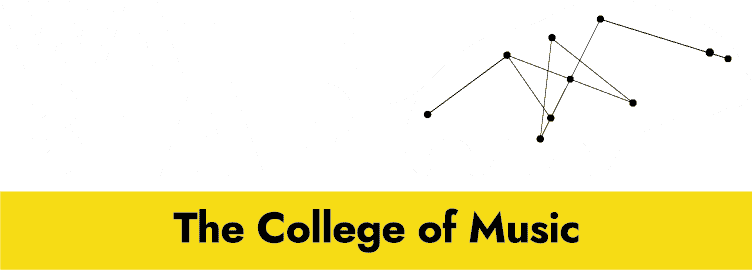
Spotify is the largest subscription music streaming service which allows any artist to get their music in front of fans and new audiences. Music streaming is one of the many ways artists can earn royalties. This is money owed to an artist, writer or rights holder when their music is performed, downloaded or streamed. When a user on any of the streaming platforms (Spotify, Amazon Music, Apple Play, etc.) listens to your music, you earn money. Simple.
Well, let’s look into it a bit more and answer these 3 questions:
It’s time to uncover some of the mystery shrouding the illusive royalty payouts on Spotify…
In April 2020, Spotify set out to explain how royalties are split and why they vary from artist to artist, and around the world. Contrary to popular belief, Spotify doesn’t pay an artist a set amount every time their track is streamed. In fact, many of the major streaming services don’t have a pay-per-stream rate. Instead, Spotify works out a ‘stream share’.
Spotify makes money through subscription fees and advertising. From there it figures out the artist’s stream share. The stream share determines your cut of the revenue. To break it down, Spotify works out this stream share by tallying up the total number of streams on Spotify in any given month, in any given country, and figures out what proportion of those streams were people listening to your music. You are then paid royalties accordingly.
After Spotify calculates stream share, the money gets divided up in 2 ways:
Of course, Spotify also takes a cut to keep business booming.
Unfortunately, there isn’t a lot of conclusive data to explain exactly how much of the revenue split an individual artist will earn in 2020. Much of the data that is bandied around online is taken from prior years and repackaged. Furthermore, many of these studies haven’t considered the many variables that affect an individual artist’s experience of stream share.
Here are some figures from statista.com from the end of 2019:
Number of music streams needed for artists to earn the U.S.
monthly minimum wage in the United States in 2019

However, broadbandchoices.co.uk claims that in order to earn a bare minimum living off your music through streaming alone, you’re going to need millions of streams.
There are many ways you can take action to increase your music streams, and they all centre around promotion. Letting more people know about your music, sharing with others and getting eyes (and ears) on your music is the aim of the game.
Make sure your social media platforms are up to date and you are engaging with your followers. When you have a new release, let all your fans across Facebook, Instagram, Twitter, YouTube, TikTok, etc. know about it and nudge them over to Spotify to check it out! If you’re having a lull in your content creation, re-share nostalgic tracks from when you started out, or links to your most popular anthems.
Make sure you submit your releases well in advance of the release date. Spotify suggests submitting tracks at least 7 days in advance of their release date but be aware that distributors may have different systems set up to get your releases onto the platforms. Submitting tracks well in advance allows streaming services enough time to consider your tracks for playlists such as Spotify’s Release Radar.
You can pitch your songs for Spotify’s playlists through Spotify for Artists as long as they are unreleased. High production value is one of many factors needed for playlist consideration.
User playlists can carry huge influence and there are a lot out there. Find playlists that carry the genre of music you create and ask to be considered for inclusion.
Sometimes it costs money to make money. Look into social media ads and Spotify’s tailored audio ads to reach more people that could be your next greatest fans.
Spotify is currently testing a sponsored recommendations features which allows artists to pay to get their releases in front of users. According to techcrunch.com these ads are charged on a pay-per-click basis.
If you have a website, make sure you embed the Spotify player and the Spotify follow button into your website. This gives website visitors an easy way to stream your songs and follow you as an artist.
Think of the money you make from streaming services as a piece of a much larger pie. In 2020, artists can make money from music in a multitude of ways. Even with some concern over the future of gigging and touring, we are seeing many artists finding creative ways to connect with their fans and continue to make money. Offer live online gigs with a donations pot via Paypal, create and sell special merchandise, and put out additional content on social media platforms or Patreon.

- ‘Water bear’ is the common name for a Tardigrade.
- Tardigrades are micro creatures, found everywhere on earth.
- They are the most resilient creatures known.
- They can survive and adapt to their surroundings, even in outer space.
- Their resilience and ability to adapt and survive inspires us in everything we do. We love them.


WaterBear Education Ltd, Hanover House,
118 Queens Road, Brighton BN1 3XG, UK Map
Email: info@waterbear.org.uk
Tel: +44 (0) 1273 726230
WaterBear Sheffield, Unit 4, Gatecrasher,
49 Eyre Lane, Sheffield S1 4RB, UK
Email: infosheffield@waterbear.org.uk
Tel: +44 (0) 1143 992720

WaterBear Education Ltd, Hanover House,
118 Queens Road, Brighton BN1 3XG, UK Map
Email: info@waterbear.org.uk
Tel: +44 (0) 1273 726230
WaterBear Sheffield, Unit 4, Gatecrasher,
49 Eyre Lane, Sheffield S1 4RB, UK
Email: infosheffield@waterbear.org.uk
Tel: +44 (0) 1143 992720
- ‘Water bear’ is the common name for a Tardigrade.
- Tardigrades are micro creatures, found everywhere on earth.
- They are the most resilient creatures known.
- They can survive and adapt to their surroundings, even in outer space.
- Their resilience and ability to adapt and survive inspires us in everything we do. We love them.
